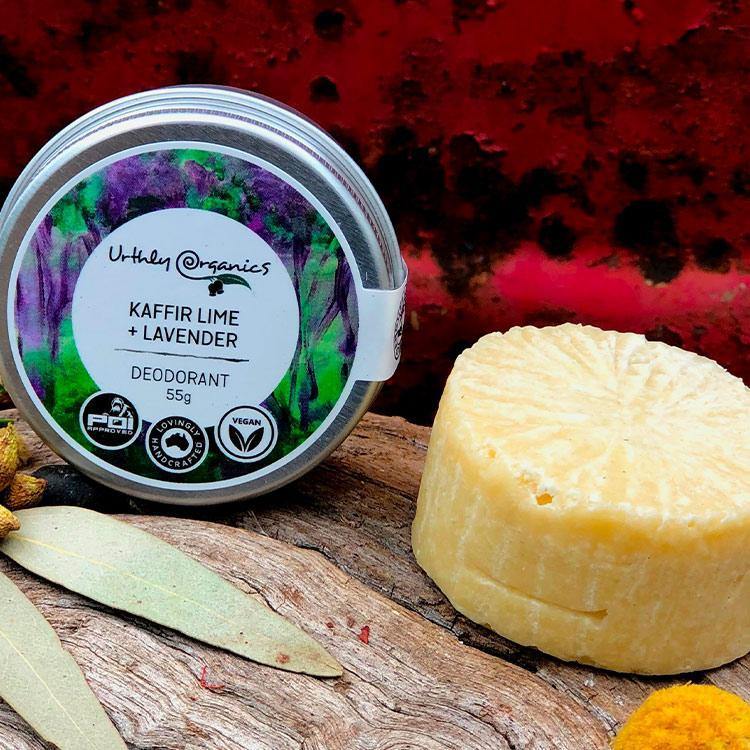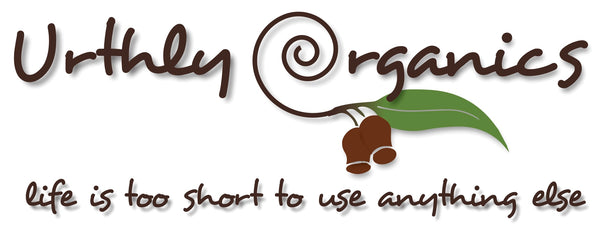
How to Enjoy Natural Deodorant Blocks
Share
This is an ongoing series part of our Shelf Secrets blog. Within this series, the blogs aim to share ideas towards ensuring you make the most out of your handcrafted products. Improving the longevity of your skincare by reducing unnecessary wastage, and also saving you money.
We’ve all been there before
You get a brand-new skincare product, only to have it for one or two uses till it’s gone. Some has melted away, it’s stuck in the packaging, or you used heaps to get the intended effect. For many, this happens with deodorant. When browsing through messages, Urthly Organics and our competitors receive malleability as the big issue regarding natural deodorant usability.
What makes Urthly Organics Deodorant Different?

Urthly Organics creates deodorant blocks that are vegan-friendly and bi-carb free (Organics, 2021). Bi-carb soda can cause abrasion and irritation of the skin when applied directly (Falcone, 2017). To ensure sensitivity is less likely to occur, alternatives have been used to create the deodorant blocks.
While the blocks may be harder at room temperatures to ensure shelf life across Australian climates, the mixture can soften fast. The kinds of butter used in the products melt at below body temperature (35.C) (Anderson, 2015). These moisturise the skin and soften the product easily for usability.
However, the deodorant blocks do receive some questioning on how to best use and store their product. To help answer this question, here are some suggestions to make the most of your natural deodorant block:
Base Storage Decisions on Climate
Urthly Organics suggests basing storage and use on humidity, heat, and lifestyle. In warmer climates, the block is more likely to be softer or melt than colder areas. This impacts the longevity of a product.
During Summer or in hotter locations, aim to store the deodorant block at under 35 degrees Celcius. This can include out of direct sunlight in cool spaces, such as a bathroom cupboard, or in the fridge. Meanwhile when below 24.C, store in a warmer location, such as near windows.
Think Small
The blocks are designed to be directly applied to the skin or to be cut into smaller pieces before use. The easiest application is also likely to occur by removing the block from the tin to apply. The tin then acts as a storage for the deodorant following use. For those after a faster application, cutting the block into smaller pieces allows for the product to heat faster for application. The smaller product also allows for other pieces to be stored, reducing the risk of the product becoming rancid from any humidity or storage issues.

Be Creative
This tip is especially for using the block during cooler climates or seasons. When the weather is cold, the deodorant block can become extremely hard. It’s about trying different things. Some approaches other Urthly Organics supporters take include:
- Putting the deodorant block under the arm to soften the mixture and then using the block normally.
- Placing the tin on a heated towel rack, coffee machine cup warmer, or other heated devices for a few minutes before application (dependent on temperature). Be sure to not heat the mixture above 37.C or for prolonged periods of time as this may reduce the longevity of the product.
- Remove a small piece of the block with a warmed spoon.
- Roll pieces in your hands to create a softened paste.
Refill
While the deodorant is the impact to preserve the life of, so is the packaging. Urthly Organics is happy to provide refills of deodorant blocks. This refill option not only contributes to saving the environment, but it also increases the longevity of the tin’s use.

Hopefully this provides some ideas on how to best use natural deodorant blocks in general, and specifically for the Urthly Organics recipe. Feel free to comment with your tips and ideas for use.
Bibliography
Anderson, L. (2015, 2 6). PLANT BUTTERS: HARDNESS & MELTING POINTS. LisaLise Blog. Retrieved 2 12, 2021, from https://www.lisaliseblog.com/2015/02/plant-butters-hardness-melting-points.html
Falcone, I. (2017, 9 4). Guide To Bicarb Free Deodorants. Nourished Life. Retrieved 2 12, 2021, from https://www.nourishedlife.com.au/article/1012704/guide-bicarb-free-deodorants.html#:~:text=Bicarb%20is%20found%20in%20many,and%20flare%20up%20itchy%20rashes.
Organics, U. (2021). Kaffir Lime and Lavender Deodorant. Urthly Organics. Retrieved 02 15, 2021, from https://urthlyorganics.com.au/products/kaffir-lime-lavender-aluminium-tin